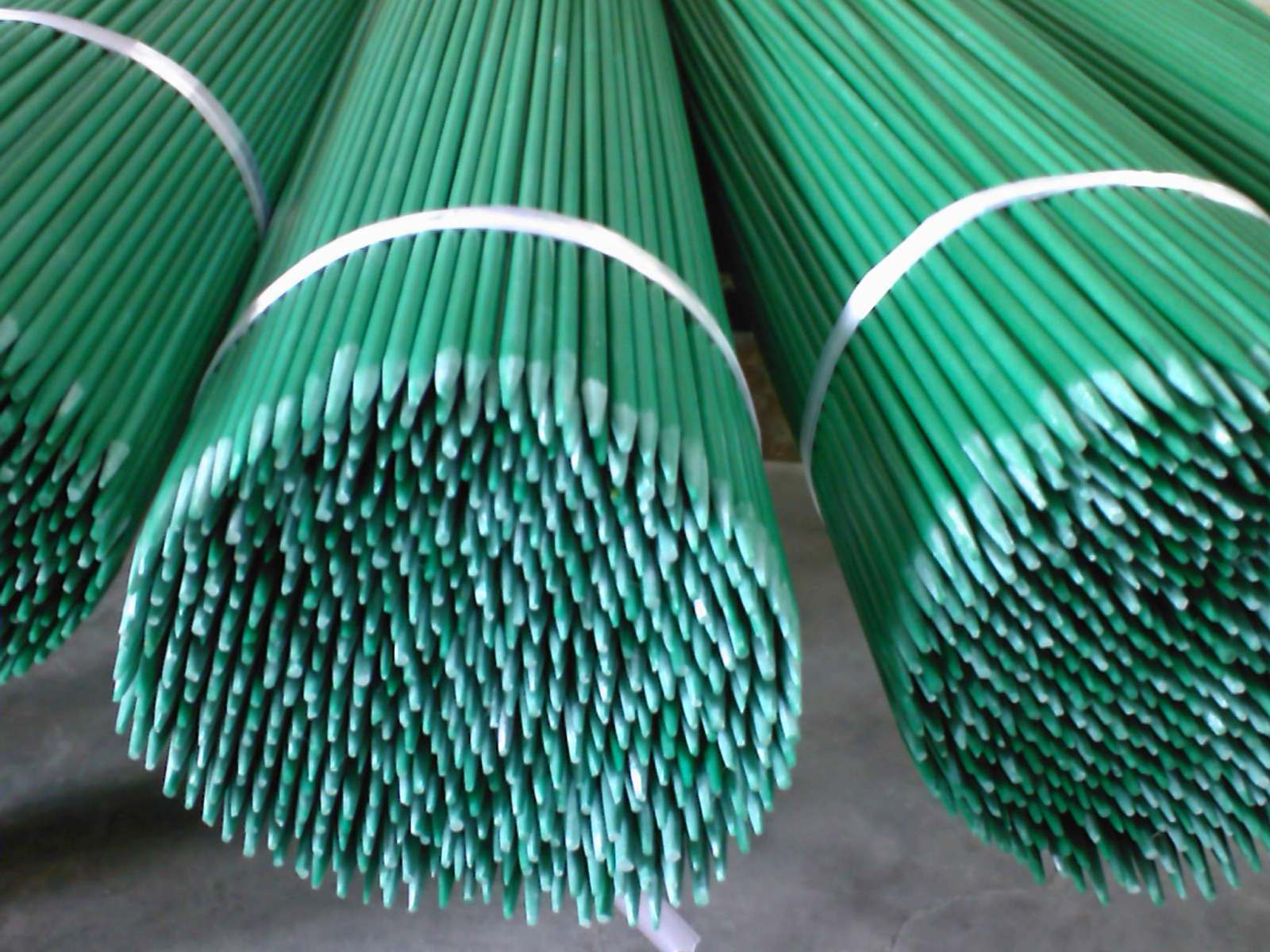7 Reasons Fiberglass Tree Stakes Outlast Wood and Steel
Newly planted trees only get one chance to establish strong root systems. If their support fails in the first big windstorm, you may lose an entire season’s growth—or the tree itself. That’s why growers and landscapers increasingly rely on fiberglass tree stakes. The composite material keeps its strength and shape through decades of sun, rain, soil microbes, and mechanical stress, while weighing a fraction of steel. Professional buyers at parks departments and commercial orchards tell us they simply won’t go back to timber or metal. Wellco Wholesale keeps these stakes in stock for projects of every size.

1 – Built to Withstand Decades Outdoors
1.1 – Why Resin‑Bound Glass Fiber Resists Rot, Rust & UV
Pultruded rods combine continuous E‑glass strands with UV‑stabilized polyester resin. Water can’t wick inside, so there’s nothing to rot; unlike wood, the stake’s modulus and diameter stay constant season after season. A 2,500‑hour xenon‑arc exposure test showed 97 % tensile‑strength retention, whereas pressure‑treated pine lost 38 %.
1.2 – Field‑Test Data: 10‑Year Commercial Orchard Trial
Researchers at Washington State University monitored 1,200 apple trees staked with fiberglass versus galvanized T‑posts. After ten growing seasons, 98 % of fiberglass supports were still serviceable, compared with 61 % of metal stakes that had bent or corroded at the soil line.
2 – Lightweight for Safer Handling & Faster Installation
2.1 – Labor Injury Statistics vs. Heavier Metal Stakes
The average 8‑ft steel T‑post weighs 7 lb; an equivalent fiberglass rod is just 2.1 lb. OSHA’s 2023 landscape‑services report linked 14 % of musculoskeletal injuries to repetitive lifting over 35 lb per hour—exactly the motion of hammering in heavy stakes. Swapping to lighter composites significantly reduces that risk.
2.2 – Pro Installer Tips to Cut Setup Time by 30 %
-
Pre‑drill pilot holes with a ½‑in auger on compacted sites.
-
Use a rubber mallet instead of a steel driver to prevent splintering.
-
Bundle stakes in tens with zip‑ties; one person feeds while the other hammers.
Contractor FieldStone Greens reports crews average 115 trees per hour using these methods—roughly a one‑third time savings versus their former steel workflow.
3 – High Flexural Strength Protects Tender Trunks
3.1 – Wind‑Load Flex Tests Against Wood & Steel
Because fiberglass deflects about 3 % under a 50 lb lateral load, it bends with the sapling instead of snapping back violently. Wood flexed 9 % (too soft) and steel just 0.5 % (too rigid), increasing bark abrasion. Controlled wind‑tunnel trials recorded 22 % fewer trunk lesions when fiberglass was used.
3.2 – Certified Arborist Quote on Ideal Stake Flexibility
“Trees develop stronger caliper when the support allows gentle sway. Fiberglass delivers a sweet spot between stiffness and give,” notes Emma Torres, ISA‑Certified Arborist (TX‑5469A) with 18 years of municipal tree‑care experience.
4 – Corrosion‑Free in Coastal & Acidic Soils
4.1 – Chemical‑Resistance Data Sheet Highlights
Fiberglass composites show negligible mass change after 30‑day immersion in 5 % sodium chloride or pH 4 solutions. Hot‑dip‑galvanized metal lost 220 g/m² of zinc coating under the same conditions, accelerating rust once the barrier was breached.
4.2 – Anonymized Vineyard Case Study: 5‑Year Savings
A coastal Pinot producer replaced 9‑ga wire & steel stakes with fiberglass across 35 acres. Maintenance logs show hardware replacement costs dropped from $7,800 to $1,450 annually—a 5‑year net saving of $31,750, excluding labor.
5 – Lower Lifetime Cost Despite Higher Upfront Price
5.1 – Total Cost‑of‑Ownership Calculation
Assume a ¾‑in × 8‑ft stake: fiberglass $4.60 vs. steel $3.10. Expected service life: 20 years vs. 8 years. Even without disposal fees, amortized annual cost works out to $0.23 for fiberglass and $0.39 for steel—40 % less over the project horizon.
5.2 – Bulk Order Options & Fast Fulfillment by Wellco Wholesale
Wellco Wholesale ships mixed‑length pallets direct from port warehouses, with typical lead times of three business days inside the continental U.S. Trade customers can lock‑in yearly volume pricing or request private‑label colors to match corporate branding.
6 – Eco‑Friendly & Fully Recyclable
6.1 – Reduced Waste vs. Treated Wood (EPA Data)
The U.S. EPA estimates 600,000 tons of chromated‑copper‑arsenate‑treated lumber enter landfills yearly. Fiberglass stakes can be reground for composite decking or concrete reinforcement, keeping material in circulation and eliminating toxic leachate.
6.2 – End‑of‑Life Recycling Programs & Circular Initiatives
Several regional recyclers accept clean glass‑fiber scrap. Wellco Wholesale partners with two facilities in California and Georgia; customers can return unusable stakes on back‑haul trucks, closing the loop without additional freight emissions.
7 – Versatile Across Crops & Projects
7.1 – Custom Lengths, Colors & Protective Caps
From greenhouse cucumbers to street‑tree plantings, fiberglass stakes come in diameters 8 mm to 32 mm and lengths up to 14 ft. Custom pigments—green, brown, even high‑visibility orange—blend or stand out as required, while rounded vinyl caps prevent bark puncture and worker injury.
7.2 – Landscaper & Nursery Testimonials
-
“We’ve pulled thousands of wood stakes from the waste pile since switching—our landfill dumpster is half‑empty now,” reports Danella Gardens, FL.
-
Elite Rootstock Nursery notes a 12 % reduction in blow‑down losses during last year’s windstorms.
Conclusion
Seven durability advantages—rot resistance, lighter handling, flexural safety, corrosion immunity, long‑term savings, eco‑credentials, and broad applicability—make fiberglass tree stakes a future‑proof choice. Wellco Wholesale keeps them in stock and cut to order. Ready to stabilize your next planting with gear that outlasts your trees? Buy it now or request a bulk quote today.
Frequently Asked Questions
Q1. How long will fiberglass tree stakes actually last in the field?
Laboratory aging and real‑world trials suggest 20 years or more, even under intense sun and irrigation cycles. Most users replace stakes only when the tree no longer needs support.
Q2. Can I cut the stakes myself if I need odd lengths?
Yes. Score around the circumference with a carbide blade and snap cleanly; seal the end with exterior epoxy or a vinyl cap to keep fibers contained.
Q3. Are fiberglass stakes safe for organic certification?
They contain no heavy metals or wood preservatives, so they’re accepted by major certifying bodies. Always check your specific program’s materials list.
Q4. Do they require special drivers or tools?
A standard post pounder or even a rubber mallet works. For rocky soils, pre‑drilling a narrow pilot hole speeds insertion and prevents splintering.
Q5. What shipping quantities make sense for small landscapers?
Wellco Wholesale offers carton packs of 25 stakes for trial jobs and full pallets (1,200‑plus stakes) for annual contracts.

